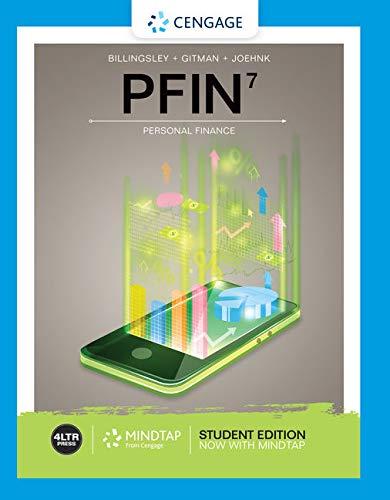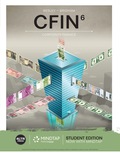1 An Overview Of Financial Management And The Financial Environment 2 Risk And Return: Part I 3 Risk And Return: Part Ii 4 Bond Valuation 5 Financial Options 6 Accounting For Financial Management 7 Analysis Of Financial Statements 8 Basic Stock Valuation 9 Corporate Valuation And Financial Planning 10 Corporate Governance 11 Determining The Cost Of Capital 12 Capital Budgeting: Decision Criteria 13 Capital Budgeting: Estimating Cash Flows And Analyzing Risk 14 Real Options 15 Distributions To Shareholders: Dividends And Repurchases 16 Capital Structure Decisions 17 Dynamic Capital Structures And Corporate Valuation 18 Initial Public Offerings, Investment Banking, And Capital Formation 19 Lease Financing 20 Hybrid Financing: Preferred Stock, Warrants, And Convertibles 21 Supply Chains And Working Capital Management 22 Providing And Obtaining Credit 23 Other Topics In Working Capital Management 24 Enterprise Risk Management 25 Bankruptcy, Reorganization, And Liquidation 26 Mergers And Corporate Control 27 Multinational Financial Management Chapter4: Bond Valuation
Chapter Questions Section: Chapter Questions
Problem 2Q: Short-term interest rates are more volatile than long-term interest rates, so short-term bond prices... Problem 3Q: The rate of return on a bond held to its maturity date is called the bonds yield to maturity. If... Problem 4Q: If you buy a callable bond and interest rates decline, will the value of your bond rise by as much... Problem 5Q: A sinking fund can be set up in one of two ways. Discuss the advantages and disadvantages of each... Problem 1P Problem 2P Problem 3P: Current Yield for Annual Payments Heath Food Corporations bonds have 7 years remaining to maturity.... Problem 4P: Determinant of Interest Rates
The real risk-free rate of interest is 4%. Inflation is expected to be... Problem 5P: Default Risk Premium A Treasury bond that matures in 10 years has a yield of 6%. A 10-year corporate... Problem 6P Problem 7P: Bond Valuation with Semiannual Payments
Renfro Rentals has issued bonds that have a 10% coupon rate,... Problem 8P Problem 9P: Bond Valuation and Interest Rate Risk The Garraty Company has two bond issues outstanding. Both... Problem 10P Problem 11P Problem 12P: Bond Yields and Rates of Return A 10-year, 12% semiannual coupon bond with a par value of 1,000 may... Problem 13P: Yield to Maturity and Current Yield You just purchased a bond that matures in 5 years. The bond has... Problem 14P: Current Yield with Semiannual Payments
A bond that matures in 7 years sells for $1,020. The bond has... Problem 15P Problem 16P: Interest Rate Sensitivity
A bond trader purchased each of the following bonds at a yield to maturity... Problem 17P: Bond Value as Maturity Approaches An investor has two bonds in his portfolio. Each bond matures in 4... Problem 18P Problem 19P Problem 20P Problem 21P: Bond Valuation and Changes in Maturity and Required Returns Suppose Hillard Manufacturing sold an... Problem 22P: Yield to Maturity and Yield to Call
Arnot International’s bonds have a current market price of... Problem 23P Problem 1MC Problem 2MC Problem 3MC: How does one determine the value of any asset whose value is based on expected future cash flows?
Problem 4MC Problem 5MC: What would be the value of the bond described in Part d if, just after it had been issued, the... Problem 8MC: Suppose a 10-year, 10% semiannual coupon bond with a par value of 1,000 is currently selling for... Problem 9MC Problem 10MC Problem 11MC Problem 12MC Problem 14MC Problem 15MC Problem 16MC Problem 17MC Problem 14P: Current Yield with Semiannual Payments
A bond that matures in 7 years sells for $1,020. The bond has...
Related questions
The $1,000 face value 7% coupon bond pays interest semi-annually. The bond will mature in 5-years. Find the Modified duration of the bond if it sells for $1,025.30. (A) 4.54-years (B) 4.18-years (C) 4.40-years (D) 5.00-years
Definition Definition Calculates the present value of a bond's expected future periodic coupon payments. Bond valuation determines the theoretical fair value of a particular bond and helps investors estimate what rate of return they could expect. The bond's theoretical fair value is computed by discounting the future cash flows or coupon payments by an applicable discount rate.
Expert Solution
This question has been solved!
Explore an expertly crafted, step-by-step solution for a thorough understanding of key concepts.
This is a popular solution!
Trending now
This is a popular solution!
Step by step
Solved in 3 steps with 1 images









